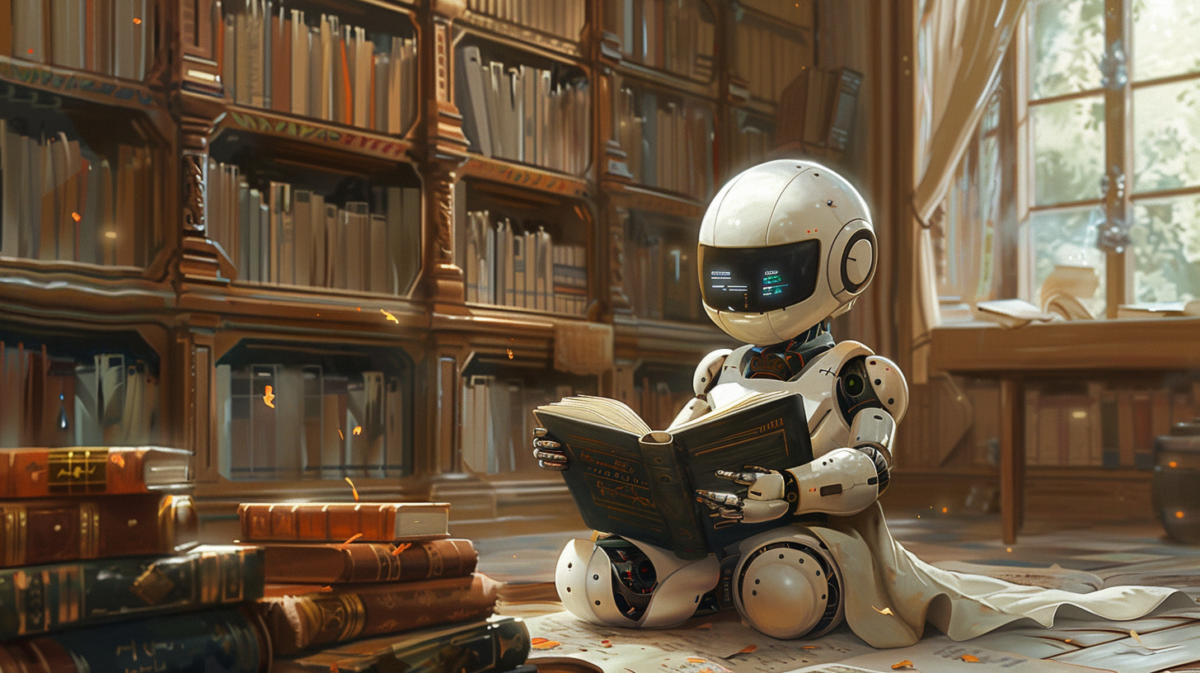
Debunking AI Myths: The Line Between Fact and Fiction
Introduction: What Are AI Myths?
Artificial Intelligence (AI) is a hot topic everywhere, sparking lots of discussions, excitement, and worries about how it will change our future. However, a bunch of myths and misunderstandings are making it hard for people to understand what AI is all about. These myths usually come from science fiction, eye-catching news stories, and the fact that AI is changing so quickly. We’re here to clear up these myths and show you what AI can do, what it’s good for, and where it has its limits. By breaking down these myths, we hope to make AI less of a mystery for everyone, whether you’re super into tech or just curious. This way, we can all talk about AI’s place in our world more clearly.
Where Do AI Myths Come From?
Artificial Intelligence (AI) both fascinates and puzzles many people, creating a rich breeding ground for myths and misconceptions. So, what’s the source of these AI myths? Getting to the root of these myths is crucial for clearing them up and truly understanding what AI can and cannot do. The origins of AI myths are as varied as the myths themselves. They come from a mix of history, popular culture, how the media talks about AI, and real confusion about the technology.
Firstly, stories from long ago and science fiction have always featured machines that mimic humans. These tales have deeply influenced how we think about AI today, often mixing up what’s possible with what’s just imaginative fiction.
Then, there’s the way the media covers AI. Headlines often focus on the most extreme outcomes, like robots taking over jobs or gaining control over humans. These stories catch your eye but might not give the full picture or reflect the real progress and limitations of AI.
Also, AI is complex, and without a tech background, it’s easy to misunderstand how AI systems learn and make decisions. This can lead to wrong ideas, like thinking AI has its desires or goals, which isn’t the case.
Finally, companies and marketers pushing AI products can sometimes overpromise what their technologies can do. They aim to impress and attract attention but can end up setting unrealistic expectations about AI’s capabilities.
By understanding where these myths start, we can tackle them head-on. It takes everyone – from teachers to tech experts, journalists to policymakers – working together to share clear, correct information about AI. Breaking down these myths not only clarifies what AI can do today but also helps us have a more informed discussion about how it will shape our future.
Historical Precedents and Science Fiction
For hundreds of years, people have told stories about machines that think and act like humans. In the 20th century, as computers emerged, these tales became even more complex. They turned into exciting stories about robots and AI that we often see in science fiction books and movies. These stories, though fun and interesting, have deeply influenced how we view AI. They mix up what’s scientifically possible with pure imagination, making it hard to tell where the line between the two lies.
Media Portrayals
Media stories greatly influence how we see AI. Headlines often spotlight the most eye-catching predictions, like robots taking over jobs or super smart machines outsmarting humans. Although these tales catch our eye, they usually skip the finer details and might not truthfully show what AI can do now or in the future.
Technological Misunderstandings
AI can be tricky to understand if you’re not a tech expert. Because it’s so complex, people often get confused about how AI learns, makes choices, and works. A common mistake is thinking of AI like it’s a human, with human feelings and thoughts. This way of thinking can make us believe AI can do more than it actually can or has its desires, which isn’t true. Let’s clear up these misunderstandings together, step by step.
Industry Hype
Companies and marketers who promote AI technologies can also spread myths. They often get excited to show off their products and services. In doing so, they might claim these technologies can do more than they actually can or make the explanations too simple, leading to confusion. This approach might grab people’s attention quickly, but it also creates false hopes about what AI can do.

AI Myth 1: The Automation Apocalypse
The Misconception: Many people worry that AI will take over all our jobs, leaving widespread unemployment and chaos in its wake. This scary scenario paints a picture where machines push humans out of work entirely, causing major social troubles.
The Reality: However, the truth is much more positive and less dramatic. AI aims to take over tasks, not whole jobs, especially the boring and repetitive ones. This shift means humans can spend more time on important work that needs emotional smarts, creative ideas, and smart planning—things AI can’t do. By helping us out, AI can make work more satisfying, boost our efficiency, and even lead to the invention of new jobs we haven’t thought of yet.
AI Myth 2: The Bias Dilemma
The Misconception: Many people think that AI is naturally biased. This idea leads to worries that AI might make societal inequalities and injustices even worse.
The Reality: AI systems perform based on the data we give them. If AI seems biased, it’s reflecting the biases in the data. To fix this, we need to use a mix of diverse and fair data, follow ethical AI rules, and check the systems regularly. By facing and fighting these biases head-on, we can guide AI to outcomes that are fairer and more just for everyone.
AI Myth 3: Sentience and Emotional Intelligence
Misconception: Many science fiction stories suggest that AI can become self-aware, thinking and feeling just like humans do. This idea often leads to big questions about what it means to be conscious or to have an identity.
Reality: In fact, AI systems work by following algorithms to process information and make decisions based on data. They don’t have self-awareness, consciousness, or real feelings. While AI can copy some ways humans interact, like recognizing how we talk or acting like it has emotions, it’s not experiencing anything. It’s important to know the difference between AI pretending to have feelings and having them. This helps us understand what AI can and cannot do.
AI Myth 4: The Omniscient Solver
The Misconception: Many people think that AI can solve any problem, big or small, from fixing climate change to making personal choices. They see AI as a magic solution that can handle any issue thrown its way.
The Reality: However, how well AI works depends a lot on the data it uses, what specific problem it’s trying to solve, and if it’s using the right methods. Although AI has done wonders in fields like health care, translating languages, and spotting patterns, it doesn’t excel at everything. Issues with data quality, ethical dilemmas, and the complexity of how humans act can all make AI stumble. It’s crucial to know these limits to use AI both smartly and ethically.
AI Myth 5: Autonomy in Decision-making
The Misconception: Many people think that AI can make decisions on its own, imagining a world where machines decide things without any human control or ethical thought.
The Reality: In truth, AI helps us make better decisions by sorting through a lot of data and offering insights we might miss. However, when it comes to big decisions, especially those about right and wrong, people are always in charge. AI is here to improve how we make decisions, not to take over the job. This highlights why it’s crucial to keep humans in the loop and ensure we use AI responsibly, with a strong focus on ethics.
Top Proofread Sources About AI
In an era where misinformation can easily spread, identifying credible and proofread sources about AI is essential for understanding its true nature and potential. Academic journals, such as those published by IEEE, ACM, and other respected institutions, offer peer-reviewed research and insights into the latest developments in AI technology.
Additionally, reputable tech news outlets, industry reports, and publications from leading AI research organizations like OpenAI, DeepMind, and MIT Media Lab provide accessible yet accurate information on AI trends, breakthroughs, and ethical considerations.
For those interested in the ethical and societal aspects of AI, think tanks and organizations focused on technology policy, such as the Center for Data Innovation and the Electronic Frontier Foundation, offer in-depth analyses and discussions. By consulting these varied sources, readers can build a well-rounded understanding of AI, free from the myths and misconceptions that often cloud public perception.
Conclusion: How to Distinguish AI Myths From Truth?
Understanding the difference between AI myths and the truth can be tricky because AI technology is complex and always changing. However, if we think critically and look to trustworthy sources, we can figure out what’s real and what’s not. Here are some key steps: First, don’t just accept shocking claims at face value. Next, look for information from a variety of respected places. Lastly, remember that the way AI is shown in the media and conversations can sometimes be biased. By following these steps, we can get a clearer picture of AI.
To really get AI, we need to see both what it can and can’t do. We also have to keep in mind that people play a big part in shaping AI, making sure it’s on the right track and used wisely. Thinking about ethics is a big piece of this puzzle too. As we dig deeper into AI’s possibilities, talking about how it fits into our world matters more and more. The true strength of AI doesn’t just come from the tech itself, but from how we decide to use it. With the right mix of knowledge, ethical choices, and a focus on helping everyone, we can make the most of what AI offers.
